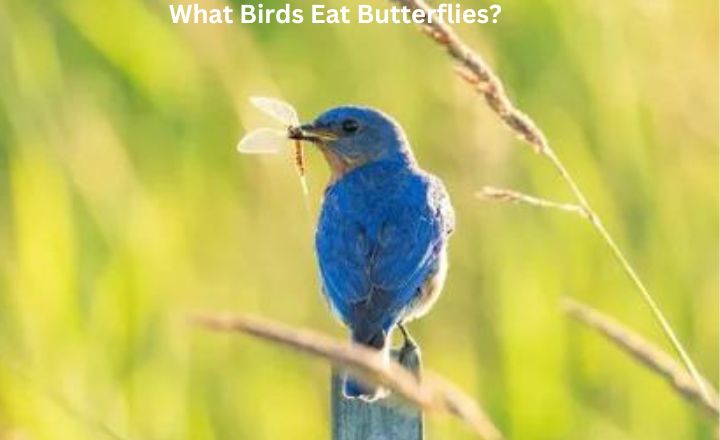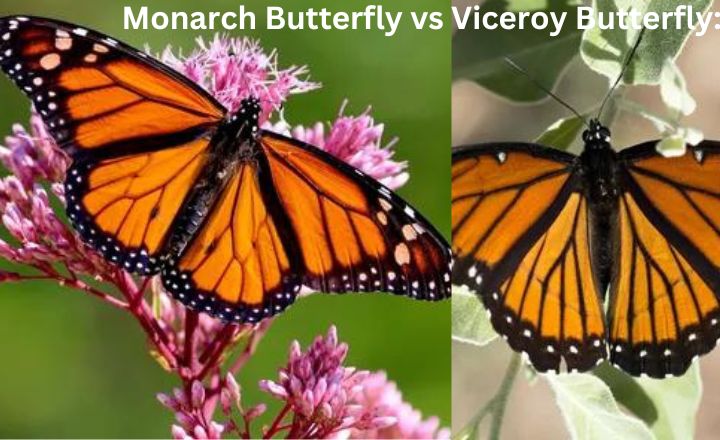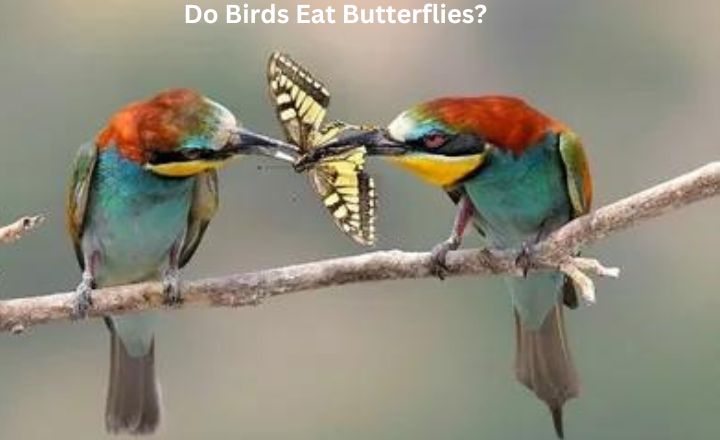Imagine a tranquil garden bathed in the soft glow of morning light, vibrant flowers swaying gently in the breeze. A delicate butterfly flutters by, its colorful wings like living art pieces. Suddenly, a shadow looms overhead as a bird swoops down with lightning speed. The question arises: do birds eat butterflies? This seemingly simple inquiry delves into the intricate web of nature’s interactions and predator-prey dynamics that have fascinated scientists and nature enthusiasts for centuries. Join us as we unravel the mystery behind what birds truly feast on and explore the captivating world of avian diets to uncover whether these graceful creatures indulge in such ephemeral delights as butterflies.
What birds eat butterflies

Many birds, particularly insectivorous species such as warblers, flycatchers, and sparrows, are known to feed on butterflies. These colorful insects may seem appealing to birds due to their bright colors and slow movement, making them easy targets for a quick meal.
Birds have developed sharp hunting skills to catch butterflies mid-flight or while resting on flowers. Can you think that Do Birds Eat Tomatoes?, some birds eat tomatoes, read all info in a blog.
While some bird species may actively hunt and consume butterflies as part of their diet, it is essential to note that not all birds eat these delicate insects. Some birds might avoid consuming butterflies due to their unpalatable taste or toxic chemicals present in their bodies. Certain butterfly species have evolved defensive mechanisms like camouflage or mimicry to evade bird predation effectively.
The potential danger birds pose to butterflies, this predator-prey relationship is crucial in maintaining ecological balance within ecosystems. By controlling butterfly populations, birds help regulate insect numbers and contribute to overall biodiversity. The dynamic interactions between birds and butterflies underscore the intricate connections that shape the natural world’s delicate tapestry.
Do sparrows eat butterflies?
Birds, including sparrows, have a diverse diet consisting of insects, seeds, fruits, and small animals. While butterflies might seem delicate and colorful creatures fluttering about in the garden, they are not exempt from being on the menu for some bird species. Sparrows are opportunistic feeders and will not hesitate to grab a butterfly if given the chance. However, butterflies are not a primary food source for birds like sparrows. One common question that often arises is: Can squirrels eat raisins? I have researched squirrels, and I have written some common points about squirrels.
Backyard Birds That Eat Butterflies
The delicate dance between backyard birds and butterflies is a fascinating display of nature’s intricate balance. While many may find it surprising, warblers are skilled aerial predators that effortlessly snatch butterflies mid-flight, showcasing their agility and precision in hunting. Similarly, sparrows have a diverse diet, including butterflies and caterpillars, which shows their adaptability in exploiting available food sources.
Flycatchers live up to their name by expertly capturing flying insects like butterflies with swift and calculated movements. Despite robins and thrushes preferring worms and other insects as mainstays of their diet, they occasionally indulge in the colorful fluttering delicacy of a butterfly, adding a touch of whimsy to their feeding habits. Lastly, wrens may be small but make up for it with voracious appetites for insects, including butterflies—a reminder that even the tiniest backyard birds play crucial roles in maintaining ecosystems.
Butterflies and Moths That Birds Tend to Avoid
Birds, known for their predatory nature, tend to avoid certain butterflies and moths due to their unappealing taste or toxic defenses. One such example is the monarch butterfly, which contains toxins from its caterpillar stage that make it distasteful to birds. Birds learn to recognize the monarch’s distinctive orange and black pattern as a warning sign of potential harm.
Another fascinating species that birds tend to avoid is the luna moth. This large, green moth with long tails may look vulnerable but harbors toxic compounds acquired during its caterpillar stage. Birds quickly learn to avoid these striking insects, providing them with a form of natural protection against predation.

Monarch Butterfly: Many may not realize that while the illustrious monarch butterfly possesses its unique beauty and grace, it also faces threats from predators in the wild. One of the most common questions is whether birds feast on these delicate winged creatures. In reality, birds prey on monarch butterflies, viewing them as a delectable meal within their reach.
Viceroy Butterfly: The Viceroy butterfly has a fascinating survival strategy that sets it apart from other species. While its striking orange and black wings mimic those of the toxic monarch butterfly, one may wonder:
Pipevine Swallowtail: Birds, the frequent hunters of insects, have a diverse range of prey when it comes to butterflies. The Pipevine Swallowtail, with its brilliant blue and black wings, is not spared from their appetites.
Queen Butterfly: The Queen Butterfly, known for its vibrant orange color and elegant flight, is a fascinating species that captivates nature enthusiasts worldwide. Despite its beauty, the Queen Butterfly faces threats from various predators in its environment. One common misconception is that birds do not typically prey on butterflies due to their unpalatable taste. However, some bird species have adapted to tolerate or even enjoy the flavor of butterflies like the Queen.
This dynamic predator-prey relationship between birds and butterflies adds an intriguing layer to the intricate ecosystem where the Queen Butterfly thrives. Despite challenges from natural predators, these resilient creatures continue to enchant us with their graceful presence in the wild.
Is it OK to Have a Butterfly Garden Near Bird Feeders?
Do birds eat butterflies or not? One common concern among gardeners is whether it’s okay to have a butterfly garden near bird feeders. While it may seem contradictory at first, the truth is that birds and butterflies can coexist in the same space. Despite popular belief, birds do not primarily rely on butterflies as a food source. In fact, most birds prefer seeds and insects over butterflies.
Having a butterfly garden near bird feeders can actually enhance the overall biodiversity of your outdoor space. Butterflies are important pollinators, and their presence can attract more beneficial insects to your garden. Additionally, the vibrant colors and fluttering movements of butterflies can add visual interest to your yard, creating a harmonious environment for both birds and other wildlife.
Summary
Do birds eat butterflies? The relationship between birds and butterflies is complex and multifaceted. While some bird species do prey on butterflies as a food source, others may not see them as a significant part of their diet. Factors such as habitat, availability of other prey, and hunting strategies all play a role in determining whether birds will actively seek out butterflies. Understanding this dynamic interaction is crucial for conservation efforts aimed at protecting both bird and butterfly populations. Researchers and conservationists need to continue studying these interactions to inform management strategies better and promote biodiversity in our ecosystems. Let’s work together to create a balanced environment where both birds and butterflies can thrive harmoniously.
FAQs:
What animals eat butterflies?
Birds, reptiles, and some mammals like bats and spiders are known to prey on butterflies.
Do butterflies have a predator?
Yes, butterflies have various predators, such as birds, spiders, lizards, and insects.
What eats butterflies in the UK?
Birds, spiders, and some beetles are known to prey on butterflies in the UK.
What do the birds eat?
Birds have varied diets, but common foods include seeds, insects, fruits, and nectar.


